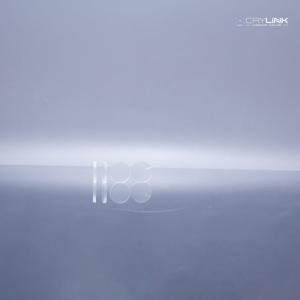Single TSAG Faraday Crystals Terbium Scandium Aluminum Garnet Iso9001
Add to Cart

TSAG Faraday crystals
Terbium-scandium-aluminum garnet (TSAG) single crystal grown by the Czochralski method was annealed in a reducing or an oxidizing atmosphere. The oxidation state of terbium cations was studied using transmission spectra and magnetic susceptibility. By annealing in the reducing atmosphere, Tb4+ was reduced to Tb3+. In the case of annealing in the oxidizing atmosphere, some of Tb3+ ions were oxidized to Tb4+. Verdet constant and extinction ratios were measured after annealing in both atmospheres. The highest Verdet constant was obtained for the TSAG annealed in the reducing atmosphere (for λ = 649.1 nm V = 8.580 x 10-3 deg.Oe-1.cm-1). The extinction ratio of the sample annealed in the oxidizing atmosphere showed the highest value of 40.35 dB.
Features
Verdet constant 20% higher than TGG
Absorption 30% lower than TGG
Parameter
| Transmittance Range(bulk/uncoated) | 400-1600 nm |
| Crystal Structure | Cubic,Space group Ia3d |
| Chemical Formula | Tb3Sc2Al3O12 |
| Lattice Parameter | a=12.3 Å |
| Growth Method | Czochralski |
| Density | 5.91 g/cm3 |
| Melting Point | 1970℃±10℃ |
| Orientation | ±15′ |
| Wavefront Distortion | <λ/8 |
| Extinction Ratio | >30 dB |
| Diameter Tolerance | +0.00 mm/-0.05 mm |
| Length Tolerance | +0.2 mm/-0.2 mm |
| Chamfer | 0.1 mm @ 45° |
| Flatness | <λ/10 at 633 nm |
| Parallelism | <3′ |
| Perpendicularity | <5′ |
| Surface Quality | 10/5 |
| AR coating | <0.3% @ 1064 nm |
| The-relationship-between-wavelength-and-transmittance | Wavelength-dependence-of-Verdet-constant-of-(111)-(110)-and-(100)-orientations-of-TSAG-crystals |
Application
Faraday isolator
Lasers with high average output power find application in different
fields of activity: medicine, industry, space. They are actively
used in numerous scientific projects such as ultrabright sources of
radiation construction (ELI), inertial confinement fusion
facilities (NIF, HiPER, Genbu), gravitational wave detection (LIGO,
Virgo, Einstein Telescope) etc. The average output power of
continuous wave and repetitively pulsed lasers is steadily growing,
making it increasingly important to reduce thermal effects arising
in various optical elements due to radiation absorption. Faraday
isolators are essential parts of such laser systems as they prevent
unwanted feedback and ensure safe operation of system.TSAG (terbium
scandium aluminum garnet) crystal is interesting medium with
effective Faraday rotation. Its advantage over the TGG crystal is a
~20% higher Verdet constant (the precise value depends on the
content of scandium) and over the TAG crystal is the possibility of
growing large-aperture single crystals of good optical quality.
Faraday isolator based on TSAG crystal for high power lasers
Imaging applications
Optical and scintillation properties of TSAG (Tb3Sc2Al3O12) crystal
was investigated, and capabilities to be used as a scintillator
screen was demonstrated. In photoluminescence (PL) spectra, some
emission lines due to Tb3+ 4f-4f transitions appeared from 500 to
700 nm. PL quantum yields of TGG and TSAG were 6.5 and 50.9%,
respectively. When irradiated by X-rays, these crystals showed
intense scintillation, and the emission wavelengths were the same
as those in PL spectra. The scintillation decay times of TSAG was
678 μs, respectively.Scintillation properties of TSAG crystal for imaging applications

